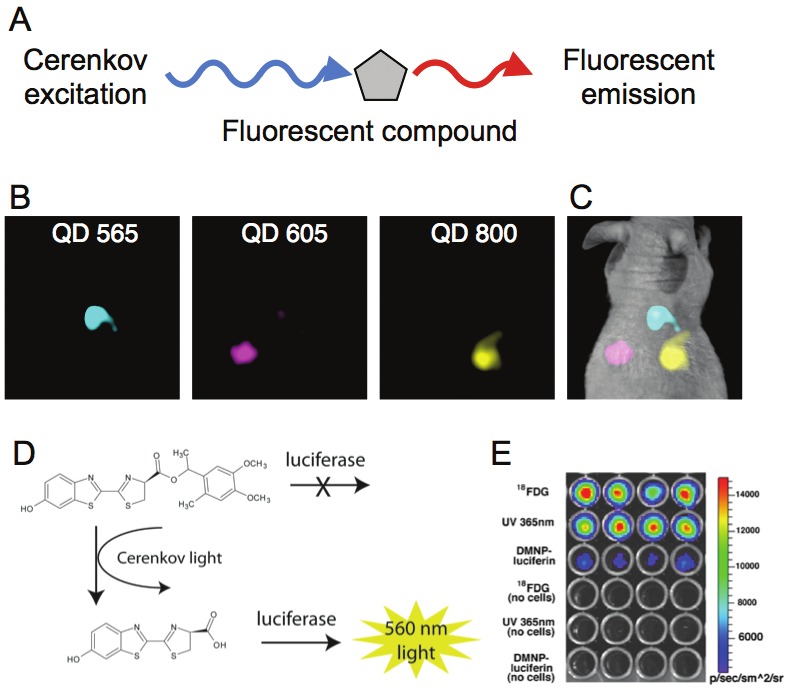Figure 3.

Fluorescent and Photo-activation by CR. To provide for a solution to the depth limitation problem of the blue-weighted CR as well as enable multiplexing in CLI, use of fluorescent compounds has been investigated. A) The principle of secondary Cerenkov-induced fluorescence is to use the radiotracer produced CR in order to excite a fluorescent molecule, protein or nanoparticle. This then emits light shifted to the red which can penetrate deeper tissue. B) A demonstration of the multiplexing capabilities of CLI with fluorophores. Here quantum dots with different emission wavelengths were subcutaneously implanted in the back of a mouse. 18F-FDG was then intravenously administered and the filter defined emission of each fluorophore was captured and C) combined. The Cerenkov light from a radiotracer can be used to initiate photodegradation of caged compounds into their active form. D) Scheme of photoactivation of DMNP-luciferin; CR activates the compound enabling the substrate to be consumed by the luciferase enzyme to produce light. E) In vitro assay demonstrating success in using 18F-FDG to activate the caged substrate and the production of light by luciferase expressing cells.
